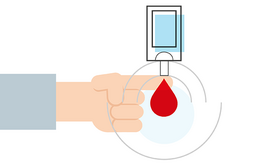A Story of Disharmony
Researchers find significant variation in regulation of pharmaceutical market systems in the developing world
The October cover feature of The Medicine Maker painted a picture of increasing cooperation and harmonization between countries – focusing primarily on the largest pharmaceutical markets: the US, EU and Japan. But how standardized are pharmaceutical market systems in the developing world? Is there homogeneity or variation?
Anthony Pezzola and Cassandra Sweet, researchers from the Pontifical Catholic University of Chile, set out to answer these questions, in the context of recent changes in the rules for ownership of medicine. The World Trade Organization’s Agreement on Trade-Related Intellectual Property Rights (TRIPS) has harmonized IP rules across the global pharma industry. But the researchers wanted to find out how standardized national pharmaceutical market systems are – specifically in the developing world.
They used a statistical technique known as “item response theory” to develop three multidimensional indices of pharmaceutical regulation for developing countries: Regulatory Infrastructure, Monitoring of the Private Market, and Public Quality Control – giving a cross-national measure of regulatory quality and an estimate of variation within and across countries.
They found significant variation across countries as well as across markets within countries (1). Pezzola discusses the findings here.
Do you think there is a misconception around regulatory standards becoming harmonized across the whole world?
Efforts by the World Health Organization (WHO) and other NGOs to establish pipelines of prequalified medicines has had a significant influence over the regulation and quality of the public medicines market. Training and support of regulatory agencies in low and middle-income countries seeking to establish prequalification systems for public procurement has helped countries adopt these important programs. But significant variation still exists across both the public and private markets. Even among countries with prequalification systems, there exists significant differences in how those systems are implemented. Hence, although more countries are moving towards prequalification, this does not mean that overall harmonization is taking place.
Three factors would seem to promote the misconception that regulatory standards are becoming more harmonized. First, the success of programs like the WHO´s prequalification pipeline, while moving countries towards common criteria, may cause individuals to overlook important differences in how prequalification systems are implemented or how those same countries regulate their private markets. Second, there may be a tendency to conflate the regulation of intellectual property rights (IPOs) of pharmaceuticals with the regulation of pharmaceutical markets. There has been significant convergence in IPO regulation over the last twenty years, but there is no reason to believe that this has had a significant spillover effect on the regulation of the quality of medicines. Third, although there have been previous surveys of pharmaceutical regulation, our study is the first to establish a systematic measure of pharmaceutical regulation. The failure to systematically compare regulatory structures and assess regulatory harmonization relied on anecdotal evidence and case studies, which often focus on specific policies and ignored wider variation within and across countries.
What do and Estonia show us about quality pharma regulation and global harmonization?
Estonia and Lesotho are perfect examples of the disconnection between the regulation of the private and public market, as well as disconnection between regulatory infrastructure and the regulation of the public market. Lesotho scores well on the regulation of public medicines, but has one of the lowest scores for the regulation of the private market and for regulatory infrastructure. Estonia ranks very high on its regulation of the private market, but is among the lowest scoring counties in the area of public quality control. The divergence between these three aspects of pharmaceutical regulation makes it difficult to imagine global harmonization in the near future. Moreover, depending on the needs of particular low and middle-income countries, high quality regulation of both the private and public spheres may not be an efficient use of resources.
What role have international organizations played in facilitating global regulatory harmonization and quality regulation in the developing world?
This appears strongly correlated to the level of development a country is experiencing. For countries with a very basic regulatory structure, it is clear that international organizations (IOs) have not only influenced but sometimes, through HIV/AIDs and tuberculosis programs, provide critical financing and training of local regulatory professionals. In other countries, the impact of IOs is less apparent.
- A Pezzola and CM Sweet, “Global pharmaceutical regulation: the challenge of integration for developing states,” Globalization and Health, 12, 85 (2016).


















